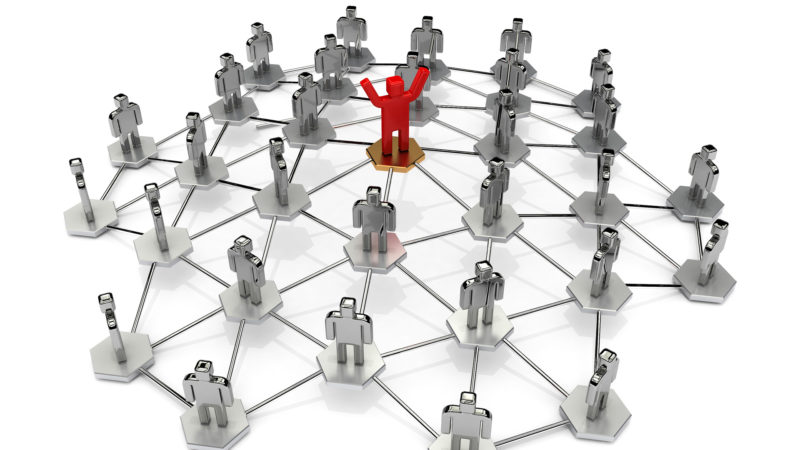The Messy, Mappable World Of Influence
As interest in influencer marketing grows, columnist Azeem Azhar explores what makes someone influential and how you can measure those characteristics.
 US Supreme Court Justice Potter Stewart famously declared (about pornography): “I know it when I see it” — and you could say the same about influence, except that it’s much harder to actually define.
US Supreme Court Justice Potter Stewart famously declared (about pornography): “I know it when I see it” — and you could say the same about influence, except that it’s much harder to actually define.
Dr. Robert Cialdini, the author of the book, “Influence,” defines it as “change,” or the ability of a given person to affect the views, beliefs or behaviors of another person.
Google Trends shows a fivefold increase in interest for “influencer marketing” over the past five years, spurred by social media. Recently, McKinsey reckoned that social recommendations influenced 26 percent of all consumer purchases.
Clearly, something is happening.
In a recent piece, public relations majordomo Stephen Waddington argued that “influence was more than a numbers game” and reinforced the importance of context in making influence work.
He is, of course, right. Influence is almost certainly contextual.
This means that a person may have influence in one sphere but not another. At one trivial level, this means your cardiologist might influence your decisions about diet and exercise, but he probably has no influence on the JavaScript framework for your new app.
Intuitive Influence
What makes someone influential?
- Experience with the topic is obvious. Someone who regularly gives advice on, say, employment law is more likely to be influential than someone who rarely does.
- “Centrality” in the network in question. Peers view him or her as an influencer and consult with him or her as such. This centrality effect is stronger than if someone self-describes as a guru.
- No strong association with paid product placement.
These intuitions align well with how we might evaluate the relative influence of, for example, a longtime technology journalist compared to Alicia Keys discussing the BlackBerry smartphone.
Academic research by Raghuram Iyengar and Thomas W. Valente of the Wharton School reinforced these intuitions in their paper, “Opinion Leadership and Social Contagion in New Product Diffusion.” They researched the sociometric measures of centrality (using PageRank or some similar network analysis), which were deemed a stronger determinant of centrality than self-description.
This all suggests there are characteristics that people with influence have in common and that these characteristics can be measured, either directly or indirectly.
The Problem With Context
What is context? One starting place is to put everyone — Ban Ki-moon, Albert Einstein, Kim Kardashian and your boss — on a single score line.
A more nuanced model might be to grab a particular context. For example, you might define a particular topic, such as public relations, and ask what the influence of a given person is to that sphere.
You could narrow those contexts by adding a geography or some other delimiter. And now you might find a more relevant group of influencers.
It’s Turtles All The Way Down
Of course, we can roll out academic models as long as we like. We can update models with more precise estimates of the impact of any one person in the network over someone else.
We can invest in building deeper “ground truth” data, or we can use more computationally expensive algorithms to more precisely fit our models of the world. But, like a street map that gets millimeter-accurate, increasing accuracy may still not help us get where we’re going any quicker.
In business, what actually matters is having predictions that are good enough to help you take action — like a street map that reflects the world well enough to get us from point A to point B. In essence, if you are a marketer looking for influencers, pragmatism trumps perfection.
And an imperfect telescope is better for predictions than a perfect mirror. An imperfect telescope at least tells you what may happen, rather than just what did.
The Solutions: A Map, Not A Simulacrum
Models of influence are useful, like maps. But influence has ambiguity — because its definition is ambiguous, because the person asking for influencers is ambiguous, and because of problems with measurement.
What algorithms and automated systems can do is bounded by limits of the ambiguity of the problem of influence.
So if you are a marketer looking to target influencers on a social network, in the absence of anything else, a global score is probably a useful guide.
But if you have topical or contextual scores, then those are probably more useful. (They are even better together. And even if you can’t get a normalized score but can get a topical ranking, that might be sufficient.)
Software influence platforms provide the map. But the crucial thing is that these things are maps, not reality.
Once you have the map, you still have to work out what your destination is and how to get there. And that depends on you.
Contributing authors are invited to create content for MarTech and are chosen for their expertise and contribution to the search community. Our contributors work under the oversight of the editorial staff and contributions are checked for quality and relevance to our readers. MarTech is owned by Semrush. Contributor was not asked to make any direct or indirect mentions of Semrush. The opinions they express are their own.
Related stories
New on MarTech